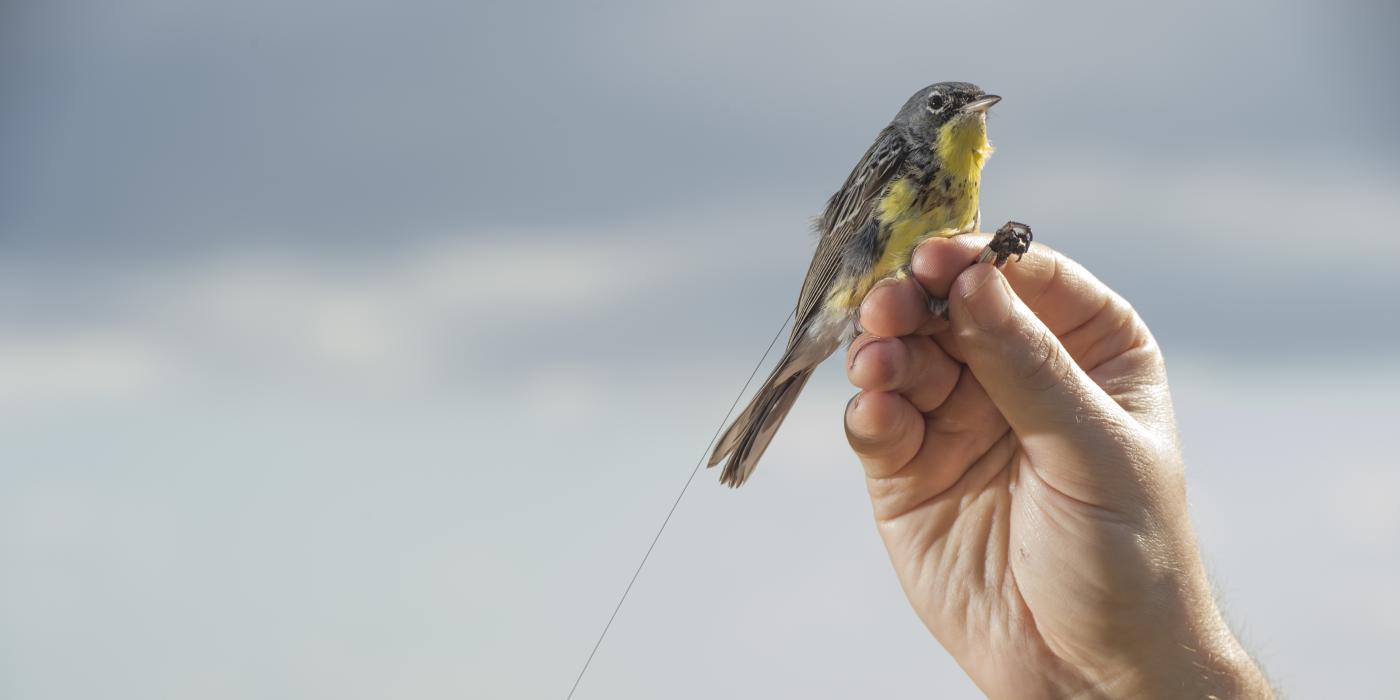Kirtland's Warbler
Smithsonian Migratory Bird Center scientists have been working to better understand and manage Kirtland's warblers since 2006. Kirtland's warblers are one of North America's rarest and most range-restricted songbirds, breeding almost exclusively in northern Michigan and wintering primarily in the Bahamas. They nest on the ground and only breed in young jack pine forests that are five to 20 years old.
Young jack pine forests typically develop after fires clear the way for new forest growth. Decades of fire suppression that began in the early 20th century prevented this new breeding habitat from forming. Additionally, parasitism by brown-headed cowbirds — birds that lay their eggs in Kirtland’s warbler nests, causing warbler parents to care for cowbird chicks instead of their own — limited warblers' reproductive success.
These two factors led to population declines. As a result, Kirtland's warblers were one of the first species to be declared endangered when the Endangered Species Preservation Act passed in 1966. Despite a successful cowbird control program that began in 1971, the warbler population had dropped to just 167 males in the wild in 1974 and again in 1987.
Planting of new jack pine habitat by the Michigan Department of Natural Resources and the U.S. Forest Service has helped the Kirtland's warbler population recover. In 2015, more than 2,300 males were counted in the wild. Habitat planting has been so successful that Kirtland’s warblers were removed from the endangered species list in 2019.
Like many other threatened and endangered species, Kirtland’s warblers are considered conservation reliant — meaning their continued survival depends on ongoing habitat management and cowbird monitoring. Nonetheless, Kirtland’s warblers represent a success story for the Endangered Species Act, scientists and government agencies.
Over the past 15 years, SMBC scientists have made many important discoveries and played a large role in shaping the management of Kirtland's warblers, including:
-
Documenting the importance of winter rainfall in the Bahamas in driving migration timing, reproductive success and annual survival
-
Using light-level geolocators to describe the migratory paths that Kirtland’s warblers take during their twice-annual journeys between Michigan and the Bahamas
-
Revising the wintering distribution of Kirtland’s warblers using tracking data, surveys, and community science data from eBird
-
Quantifying migratory connectivity in the species for the first time
-
Reducing the Kirtland's warbler's conservation reliance by evaluating, and eventually suspending, a cowbird trapping program through a large-scale adaptive management experiment
-
Discovery of some of the longest distance breeding-season prospecting movements known in birds
Since 2014, their Kirtland’s warbler program has been led by Nathan W. Cooper, with the help of senior scientist emeritus Peter Marra. Their current priorities include:
- Producing the first-ever direct estimates of spring migration survival in a songbird and developing a full annual cycle population model
- More directly estimating carry-over effects from winter to breeding using the Motus Wildlife Tracking System
- Documenting how gut microbiome changes in individual birds across the full annual cycle
- Developing a monitoring strategy to ensure that managers are the first to know if cowbirds become a threat to warblers in the future
- Modernizing and reducing the cost of population monitoring
- Evaluating population responses to alternate planting techniques and changes in tree species composition that are designed to make the habitat creation program more financially sustainable
Through their innovative research program, SMBC scientists aim to better understand the ecology of all migratory birds and provide the conservation and management community with the information needed to ensure that Kirtland’s warblers persist for generations to come.












